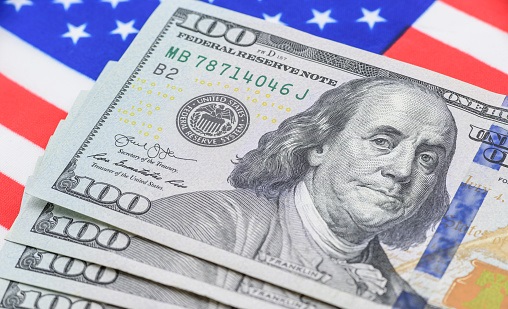Wednesday’s Asia Pacific session saw the return of Chinese market participants; the Shanghai Composite managed to end the session with modest gains of about 0.4% after the PBoC offer some support by pumping CNY 120B (about $18B) via 7 and 14-day reverse repos and (as expected) left its 1 and 5-year Loan Prime Rates unchanged at 3.85% and 4.65% as expected. Meanwhile, there was some positive news flow on the Evergrande front; reports emerged that the co. would make a roughly $36M onshore bond payment this Thursday, though there was no news regarding the upcoming $83M in offshore interest payments also due this Thursday. Note there were also some rumours that there might be a deal in the works with the Chinese government that would see Evergrande separated into three entities, though news desks have not been able to verify the validity of these rumours as of yet. All in all, angst regarding Evergrande has lessened a little on Wednesday, allowing markets to now shift their focus to another key market theme, this evening’s FOMC policy announcement.
In terms of what to expect from the meeting; the benchmark interest rate (the federal funds target range) will be left unchanged at 0.0-0.25% and QE buying will be left at $120B per month. New economic forecasts and a new dot-plot will be released. MUFG think FOMC’s updated dot-plot is likely not to show the median member expecting rate hikes in 2022, as the bank may fear that by signalling to markets that a rate hike is likely in 2022, this may undermine the message they have been trying to get across that the end to QE tapering and the start of rate hikes are not automatically linked. Core FOMC members like Chairman Powell have, in recent weeks, been strongly emphasising their current guidance, which says there will be no rate hikes until the US economy has reached full employment, regardless of how long this takes to achieve after the bank has finished tapering its QE programme. The end to QE tapering does not automatically start a countdown to rate hikes, the argument goes. But insistence from Fed members that QE tapering and rate hikes are unlinked will not stop investors from drawing parallels between the two. More hawkish FOMC members have in recent weeks argued that QE tapering should be swift just in case the Fed does need to start hiking rates by mid-2022. Such an argument suggests there is an assumption at the Fed that rate hikes cannot begin until after the bank has finished tapering its QE programme, which partly contradicts the insistence from core Fed members like Powell that the two are unlinked.
Given the above, if in November (when markets expect the Fed to formally announce its QE tapering plans), the Fed unveils a longer tapering timeline (i.e. that it will take until the end of 2022 to reduce net purchases to zero), this would imply that the Fed strongly expects not to hike rates over this time period. Therefore, if the dot-plot shows that a median of Fed members expects a rate hike by the end of 2022, you can take this longer, 12-month taper timeline off of the table. Sticking with the same logic, if the Fed dots do signal a hike sometime in 2022, this strongly implies that the bank thinks its QE tapering will be over (probably) by mid-2022 at the latest (in fairness, this is already the median expectation of market participants). Thus, some market participants will use today’s dot-plot not only to derive some guidance for what the Fed’s rate hike timeline is going to look like but also as to what the QE taper timeline may look like. Hopefully, rather than being left to draw inferences from the dot-plot, Chairman Powell will at least offer some hints as to what the taper timeline might look like in the post-meeting press conference. But that may be expecting too much, and there is a strong possibility that the only further information we get on tapering from Powell is something along the lines of “we are one step closer to formally announcing tapering to begin at the end of the year”, which would be in line with market expectations for a formal announcement in November, followed by commencement of actual tapering in December.
Elsewhere, it’s worth keeping an eye on events in Congress. The US House last night passed a bill suspending the debt ceiling until next December. However, this was passed along party lines and faces no chance of passing the Senate (60 votes out of 100 are needed and the Democrats on hold 50 seats – the Republicans are currently in obstructionist mode). The debt ceiling suspension thus needs to be passed via budget reconciliation (which just requires a simple majority in the Senate, which the Democrats have when you include the Vice President’s tie-breaking vote). But this may require agreement between the Democrats on their broader spending plans, which may yet be a problem. MUFG caution that we could see a repeat of 2011, “a negotiation that went right to the wire that prompted a ratings downgrade culminated in a near 20% drop for the S&P 500.” The bank’s base case is for the issue to be “sorted” but it does represent a tail risk to markets.
Ahead of tonight’s FOMC meeting, we are seeing global equities rally a little (S&P 500 futures are up about 0.5% after Tuesday’s flat session and the Stoxx 600 is up about 0.7%), global developed market bonds rise a little (US 10-year yields and German 10-year yields are both up about 1bps, with the former still ranging comfortably above 1.30% and the latter just to the south of -0.30%), and risk-sensitive commodities rally (WTI is up about $1.0 to $71.50 per barrel, Copper is up more than 2.0%). In terms of FX markets the mode is subdued; the dollar is flat, with the DXY trading within tight ranges around the 93.20 mark and within recent ranges. The somewhat improved market tone sees JPY underperforming a little and at the bottom of the G10 performance table this morning (down about 0.3% versus the US dollar). Last night’s BoJ announcement went exactly as expected (no major policy changes announced) and has not impact JPY or broader market sentiment.
GBP is also a little weaker, down about 0.1% on the session versus the buck; a number of analysts have discussed in recent days how the market might have been getting a bit ahead of themselves regarding expectations for a hawkish shift by the BoE. According to MUFG, “given what the market has being pricing over the last couple of weeks, that could lead to some kind of disappointment and a softer pound”, before continuing that for GBP to rally again, the BoE would need to lay out a timeline for raising rates as soon as early next year, which seems premature. A key risk being watched by the BoE that might ultimately result in a delay to their rate hike timeline is how the UK’s labour market deals with the phasing out of the job furlough scheme set to end this month; analysts at ING have said they expect a rise in unemployment over the coming weeks. Meanwhile, outperformance is being seen in some of the more risk/commodity price-sensitive currencies, driven predominantly by the rally in equities and commodities; NZD, AUD and CAD are each up about 0.2-0.3% on the day versus the buck. EUR and CHF are both close to flat.
The Day Ahead
Today’s FOMC policy decision, statement, new economic forecasts and new dot-plot are all unveiled at 1900BST and then there is the usual press conference with Chairman Powell at 1930BST. Some analysts have suggested that Powell, who is not a fan of the dot-plot, may seek to essentially tell markets not to read too much into what the new dot-plot is saying (note that this attempt failed in June, when the USD surged on a more hawkish than expected shift in the dots). Other events of note today include US August Existing Home Sales and Eurozone September Consumer Confidence at 1500BST and weekly official crude oil inventories at 1530BST. Focus will otherwise be on any fresh news regarding China’s Evergrande.




